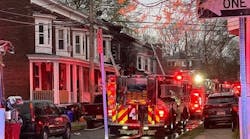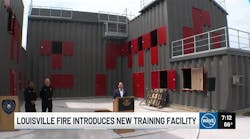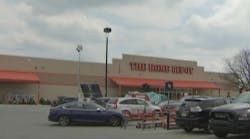Greater diversity in the fire service is an imperative for our institutions, our society and our public safety. By the year 2042, today's "minority" demographics will represent the majority of our population. According to the U.S. Census Bureau, the Hispanic and Asian populations will nearly triple and the African American community will nearly double in size. These demographic shifts will significantly impact the day-to-day emergency services and prevention efforts of fire/EMS.
FIRE 20/20's research, funded by a Fire Prevention and Safety Grant, showed that both first responders and civilians are at greater risk in multicultural communities because of communications challenges, trust issues, lack of ongoing relationships and knowledge gaps. These challenges present compelling reasons why individual fire departments and the U.S. fire service as a whole need to address the importance of recruiting and retaining the next generation of qualified, diverse, inclusive, safe and competent female and male fire-EMS personnel.
We are a legacy profession. A significant number of firefighters were brought up in firefighting families or had friends who encouraged them to join. This is natural because we share what we love with the people we hang out with. And the people we hang out with tend most often to be like us. So how do we get from where we are now to greater diversity?
Because of the large number of boomer retirements and the generational shift taking place for another four to seven years, we have an opportunity to create a tipping point with Generation Y (also known as Gen Y, Millennials, Gen Why, Net Generation) -- born between 1980 and 2000, numbering around 100 million or a third of our total population, and considered to be the largest and most diverse generation in our history. Having grown-up with multiculturalism, Gen Ys are more inclusive than any previous generation. They're also more family-, more civic-, more service- and more team-oriented. Gen Ys have the potential of enabling us to grow a pretty phenomenal next generation of fire-EMS personnel.
What the Leaders Say
We interviewed six fire service leaders to get their take on what they believe are some important fundamental underpinnings for recruiting and retaining diversity.
- It starts at the top. All six leaders agreed that if a department is committed to diversity and inclusion, it requires a commitment from the top of the organization.
"First and foremost, the head of the organization must be committed to the diversity of the organization in a very real way," says Madison, WI, Fire Chief Debra Amesqua.
Colorado Springs, CO, Fire Chief Manny Navarro agrees. "To affect change as a fire chief, you have to express your position very clearly and very succinctly to everyone," Navarro says. "There's no room for ambiguity!"
Amesqua believes that actualizing a commitment to diversity requires her personally recruiting on a regular basis. "I don't care if it's a two-station department or 100-station department -- it's critical that the CEO is out there recruiting."
Amesqua infuses the values of inclusion, caring, compassion and teamwork on a daily basis. She personally interviews all candidates, teaches the class on sexual harassment and diversity, and while getting input from her training officer and personnel chief, is the only person who makes the final selection.
"I want to hire extremely well-rounded individuals who are prepared emotionally and physically for the challenges of the future -- the challenge of diverse people within our community," she says. "We're getting more and more diverse. People are coming here from all around the world. They're bringing cultural norms which we're not familiar with and we're in their homes every day. So we've got a steep learning curve."
"Starting at the top" includes the International Association of Fire Fighters (IAFF) local leadership.
"There's a pretty significant turnover rate for chiefs," says Chief Richard "Smokey" Dyer of the Kansas City, MO, Fire Department. "We want change to stick and not be dependent on the tenure of a particular chief. So since 2000, we've used a labor/management process in the hope and design that changes that are made are not just the chief's but are those of the whole department. Trust is one of the sub-components of that relationship but so is the sharing of power."
Dyer adds, "Before I came, we were averaging 150 grievances a year. A big portion of labor's and management's time was handling the grievances and being in an adversarial relationship to determine who had done what wrong. Our energy was consumed with the battle. There's no time for progress or change. So I came to this conclusion: A consensus decision that we would agree to and implement and would last longer than me is better than the decision I think is best that would last no longer than me."
- Work from the inside out. A team-oriented, diverse department is like a well-oiled piece of apparatus -- it functions effectively both on the inside and the outside. If a department is going to attract and retain diverse firefighters and paramedics, it needs to be a welcoming working and living environment for everyone. That's different from being tolerant and being nice. Tolerance and being nice are surface behaviors. As Deputy Chief Robert Oliver of the Redmond, WA, Fire Department explains, "Building meaningful relationships and effective teams require honest communication beyond the limits of formalities, niceties and defense mechanisms."
Supporting Diversity
Oliver gives training on relationship skills and considers it a way to put in place an environment that supports diversity.
"You have to create an environment that supports people being who they are," Oliver says. "My training on relationship skills -- acceptance, handling rejection, mechanisms to deal with different people -- is focused on successful strategies that are not damaging. Anytime you have different people coming together there's sniffing around and some adjustments that have to take place. That doesn't have to be cruel. We can have acceptance rituals."
- Relationships are key. Plain and simple, recruiting is all about relationships. Relationships take time to develop and nurture. Signing up applicants by category solely for the purpose of making diversity numbers doesn't cut it. On an annual basis, Amesqua sends out a notice to line personnel asking them to let her know about someone who they want to work with for the next 20 to 30 years.
"They not only have to put their names and reputations on the line," explains Amesqua. "They have to help those who they want to succeed. They become de facto mentors. I believe that if an individual really wants to shine in recruit school, he or she would bring a woman or man of color to the table. In other words: Don't just tell me you value diversity, demonstrate it."
Relationships also play an important role in breaking down the barriers of prejudice.
"It's really easy to dislike someone when you don't know anything about the person," says Navarro. "Once you do and come to care and value who he or she is, the differences -- skin color, religion, sexual orientation -- become a 'so what!'"
For Chapel Hill, NC, Fire Chief Dan Jones, the importance of relationships applies to the local government and throughout the community as a whole.
"I've been blessed with supportive city managers," Jones says. "I see myself as part of the overall city management team and am always looking for ways where the fire department can step in and provide added value. That puts us out in the community in a visible way and supports both recruitment and prevention."
- Out-of-the box thinking. "Insanity is doing the same thing over and over again and expecting different results." That quotation is often attributed to Albert Einstein. While not meant to be taken literally, it's a good reminder that in recruiting and retaining diversity, we need to try different things.
"We're a member of the Chamber of Commerce," Jones says. "It gives us access to a tremendous amount of information. As a member, we get the e-mail list and membership list. When we have recruitment information or prevention information or emergency management notification information, we can use the chamber's e-mail blast. We get immediate access to the business communities' communication network."
Dyer is using out-of-the box thinking in Kansas City to recruit more qualified females.
"I helped with the creation of CPAT (Candidate Physical Ability Test)," he says. "IAFF didn't want the test to be stronger than what's required to do the job nor to be used as an obstacle to gender diversity. But using it for selection discourages women. Following the insight of the Black Chief Officers Committee about how the military doesn't use the physical test to get into boot camp, but pass out, we split the academy into pre-cadet and cadet. Our people conducting interviews with candidates are trained not to evaluate or be subjective about someone's fitness so everyone enters the interview equal, whether you weigh 130 or 300 pounds. We say, 'There aren't any questions on the interview about physical ability so don't be down-grading an applicant on your subjective opinion of his or her ability to pass.'
"Candidates are brought into the academy as a pre-cadet and for the first 8 weeks only get didactic training. Every day, they are given physical fitness training time. Those that aren't in shape have eight weeks to prepare for CPAT. I'm always present at CPAT, so I can testify from my own observations. Our training officer can tell me who he thinks will pass, fail, etc. He's never wrong. Once CPAT is given and the recruits pass, then they get bunker clothing and gloves and the real training as a firefighter. This helps our safety and it also helps the women bond with the other classmates -- they've proven they have the physical ability to be a firefighter."
Another out-of-the box thinker, Alberto Olmos, president of the National Association of Hispanic Firefighters (NAHF) and a captain in the San Jose, CA, Fire Department, believes that addressing the community's language needs is one way fire departments can accelerate diversifying.
"We've been tracking the language challenge in San Jose for over 10 years," Olmos says. "We've had selective, bilingual certified hiring going back 25 years to meet the needs of our community. On behalf of NAHF, I submitted a resolution to CFSI (Congressional Fire Services Institute), which they passed unanimously in April to track languages encountered during emergency responses. The resolution is a tool which provides fact-based data that departments can use to support funding in regards to training, staffing, and multilingual fire prevention programs."
Summer camps for young women, run as non-profits by women firefighters, are another example of out-of-the box thinking. Camp Blaze, Camp Summer Heat, Camp Inferno and Camp Fully Involved are in the U.S. and Camp Courage is in Halifax, Canada. These weeklong, hands-on programs introduce girls from 14 to 19 to a career in the fire service.
Navarro proudly supports Camp Summer Heat: "It's terrific seeing firsthand such positive role-modeling. The growth in the girls' skills and confidence and the staff's energy and commitment are inspirational."
In Conclusion
Selflessness, being a team player, integrity, courage (physical and moral), honesty, fitness, caring, compassion, commitment and competence -- all values that fire-EMS hold dear and are exemplified every day. Adding inclusion and diversity widen our perspective, increase our learning, support growth and positive change, and help us to protect lives and property more safely and effectively in our changing world.
As John F. Kennedy said, "Change is the law of life. And those who look only to the past or present are certain to miss the future."
LARRY SAGEN is the founder and executive director of the research and education non-profit FIRE 20/20. Its mission is to help fire departments connect with their multicultural communities to increase the reach and effectiveness of prevention and recruitment programs. Prior to forming FIRE 20/20, Sagen worked with departments throughout the U.S. and Canada in the areas of entry and promotional testing and teamwork training. He has a master's degree in social work from Washington University in St. Louis. For more information about FIRE 20/20, visit www.fire2020.org or e-mail [email protected].





